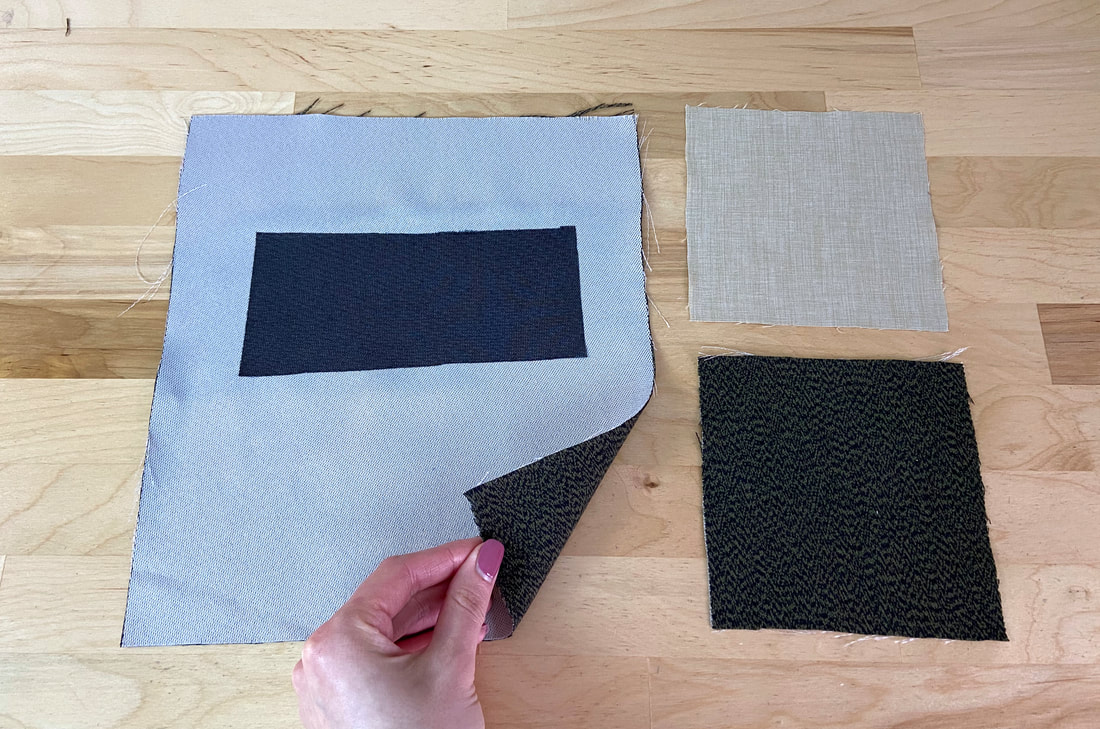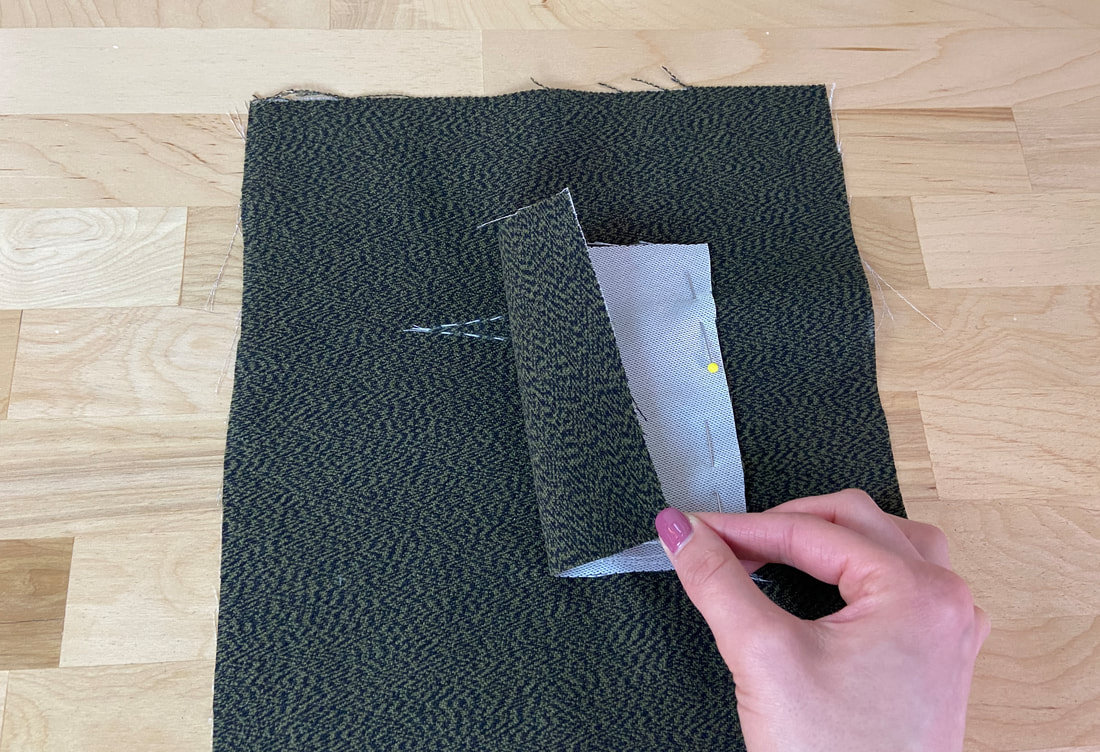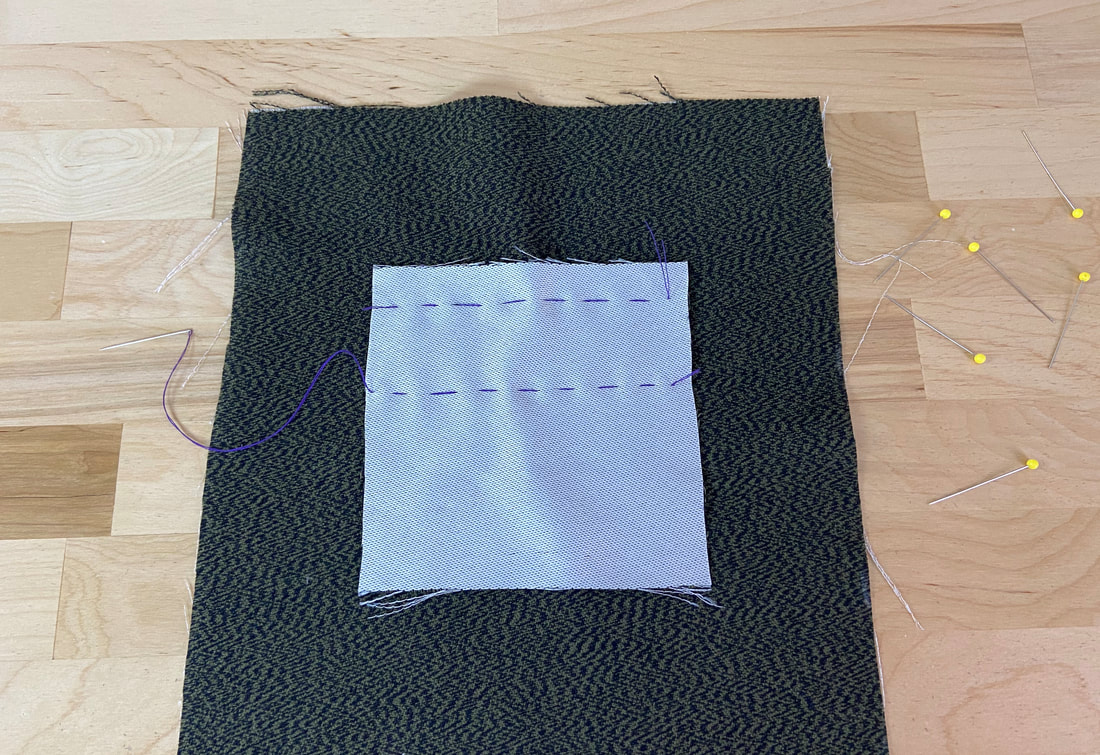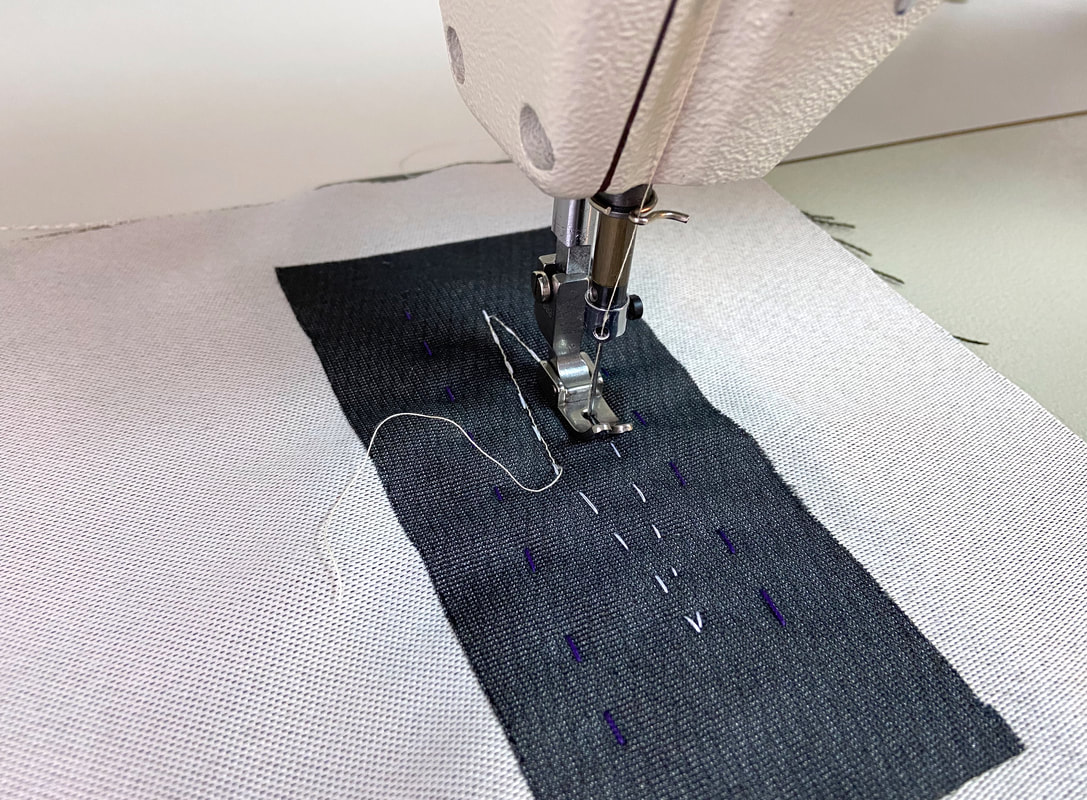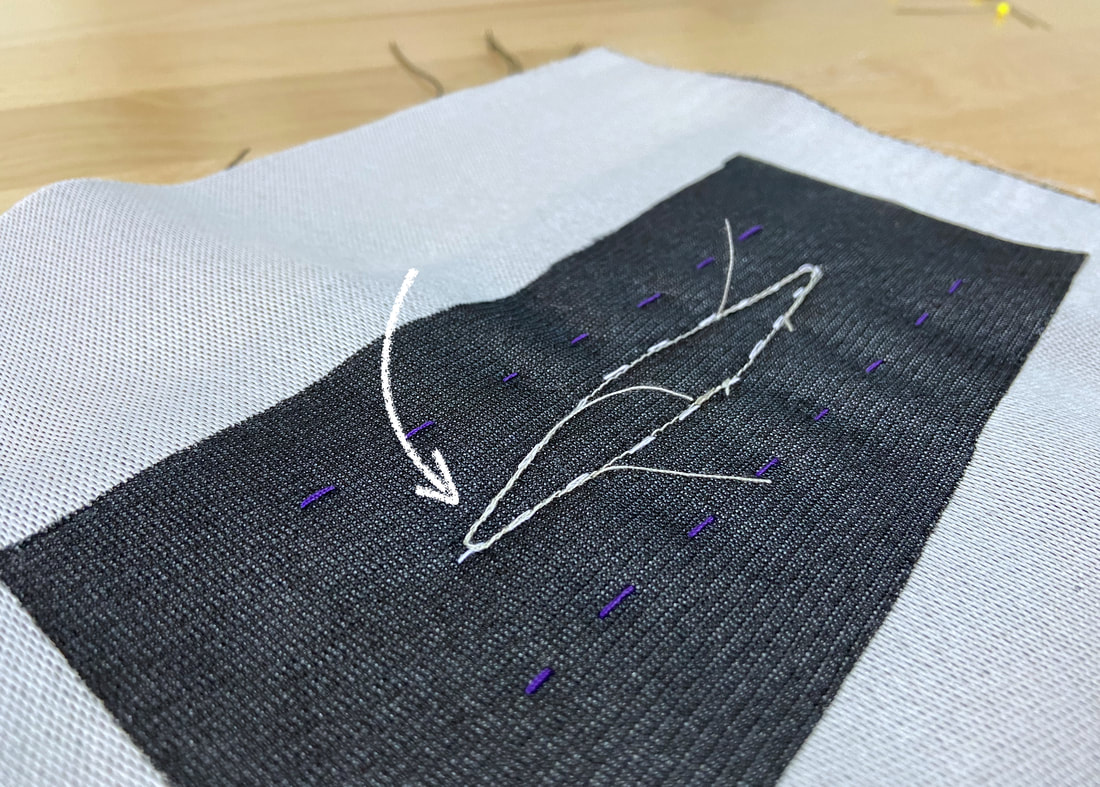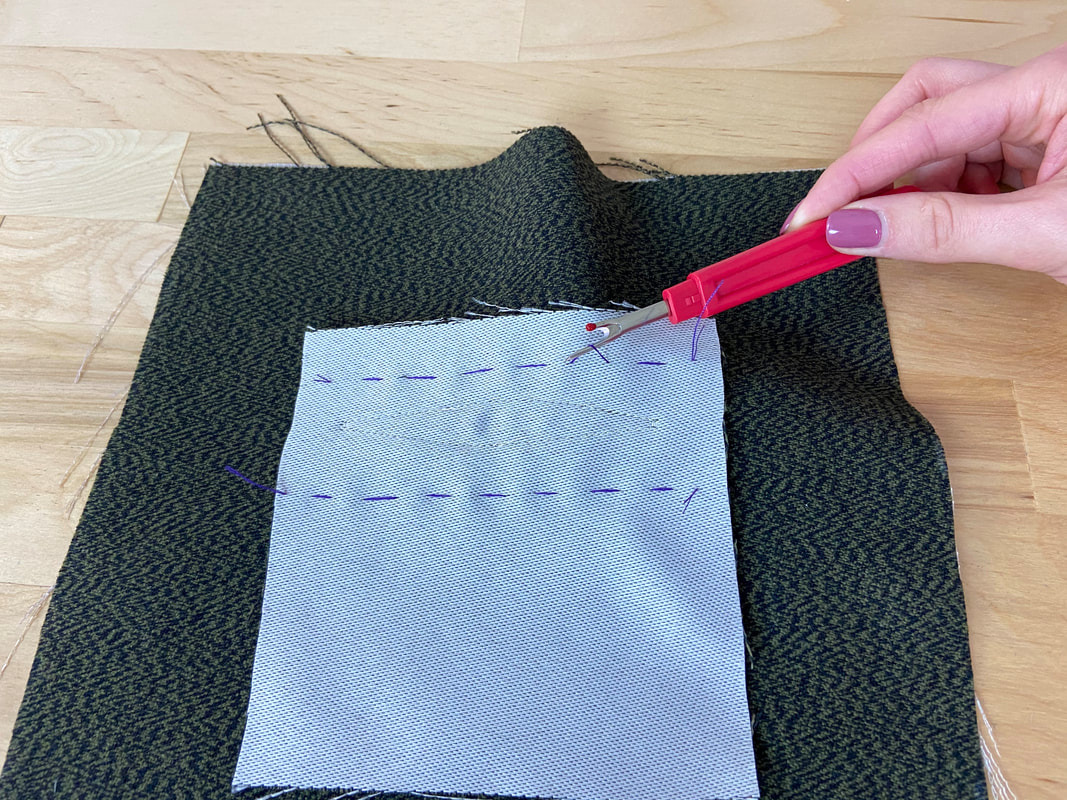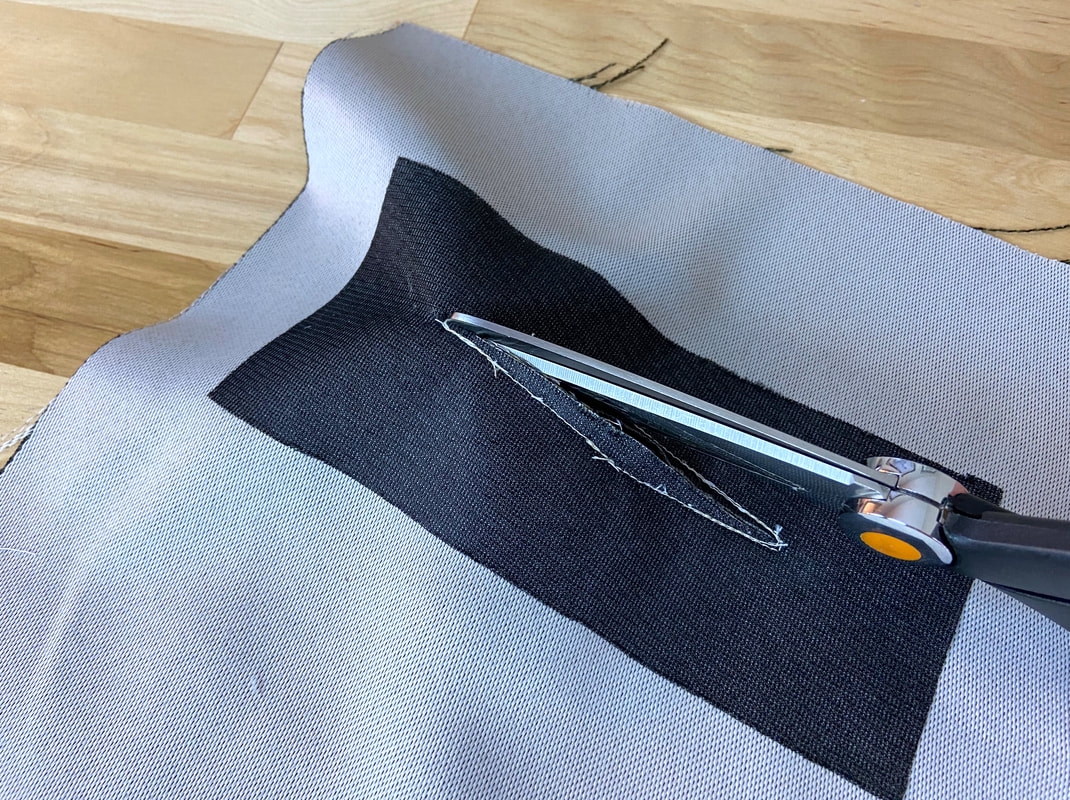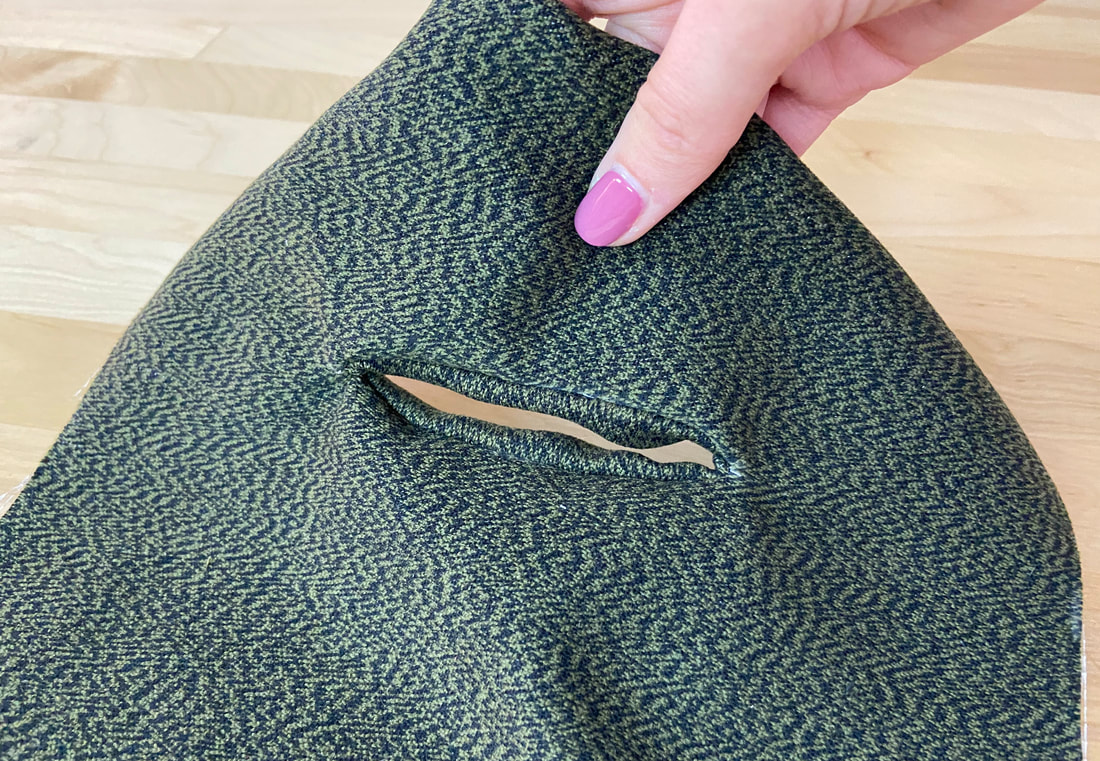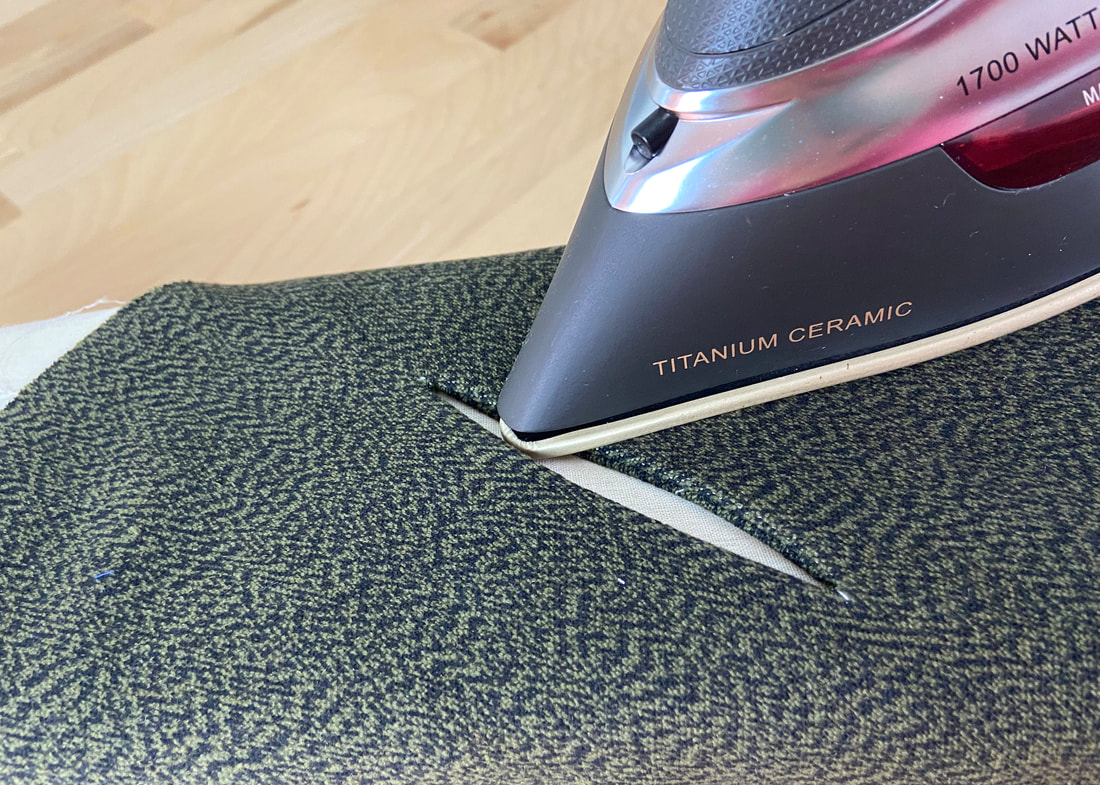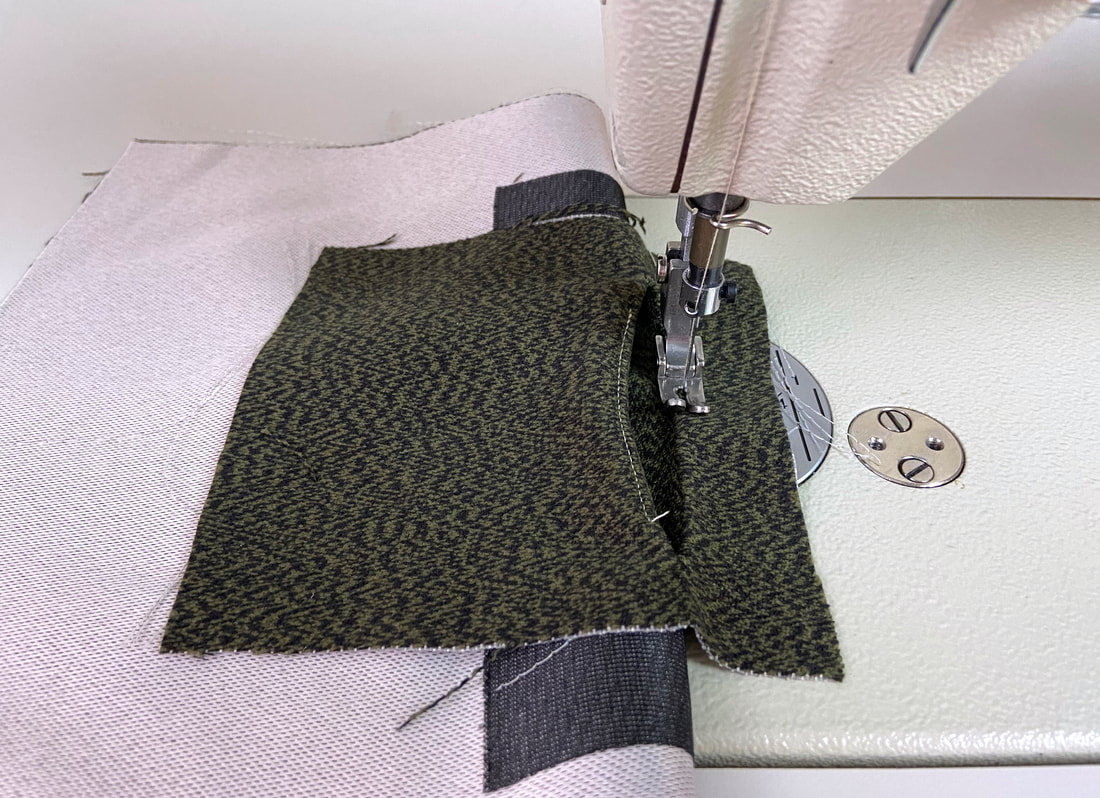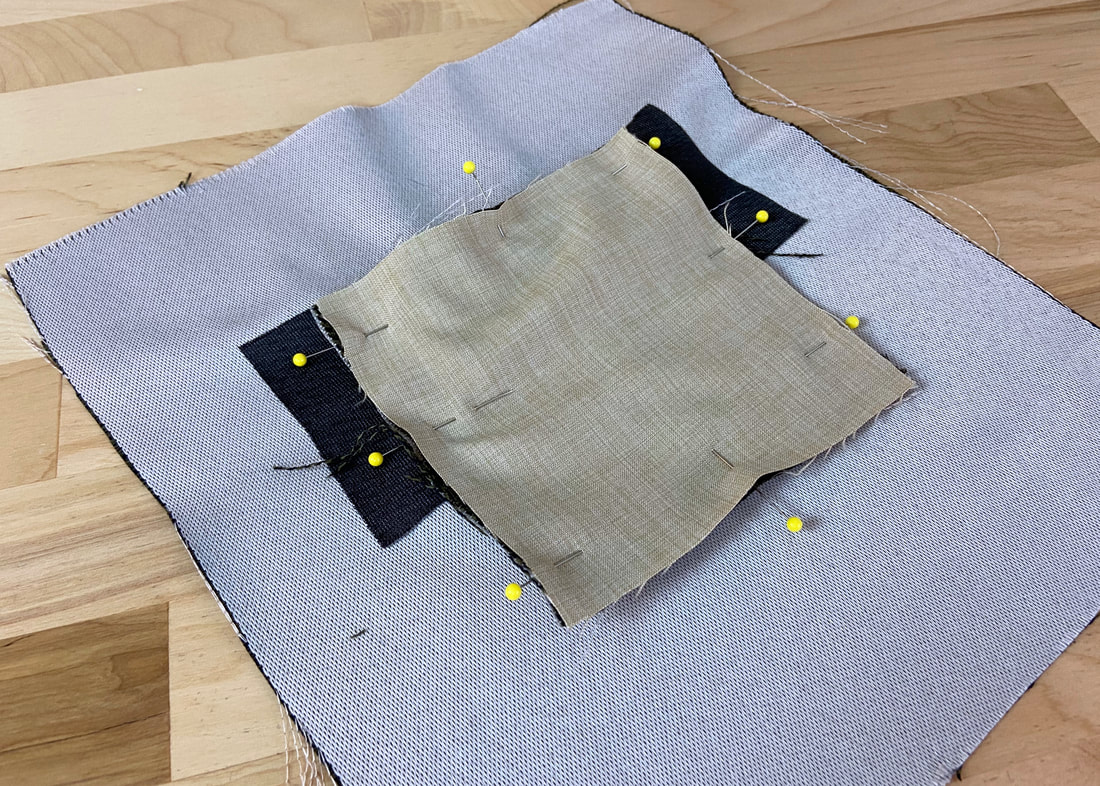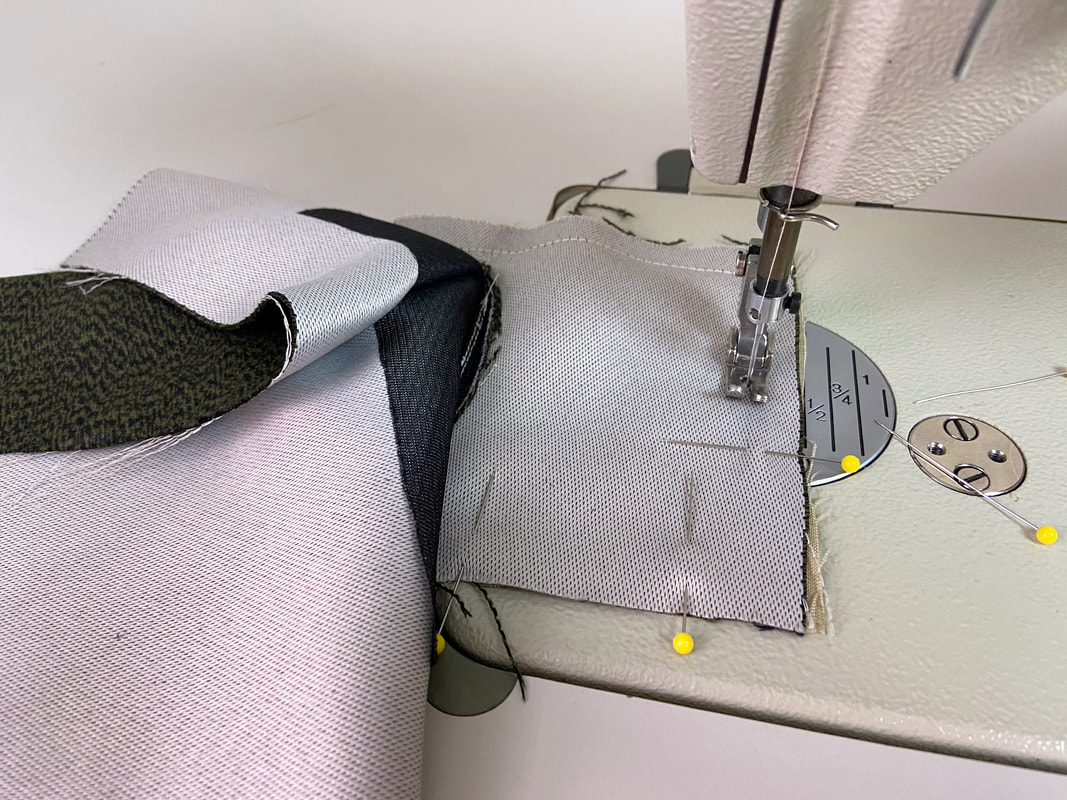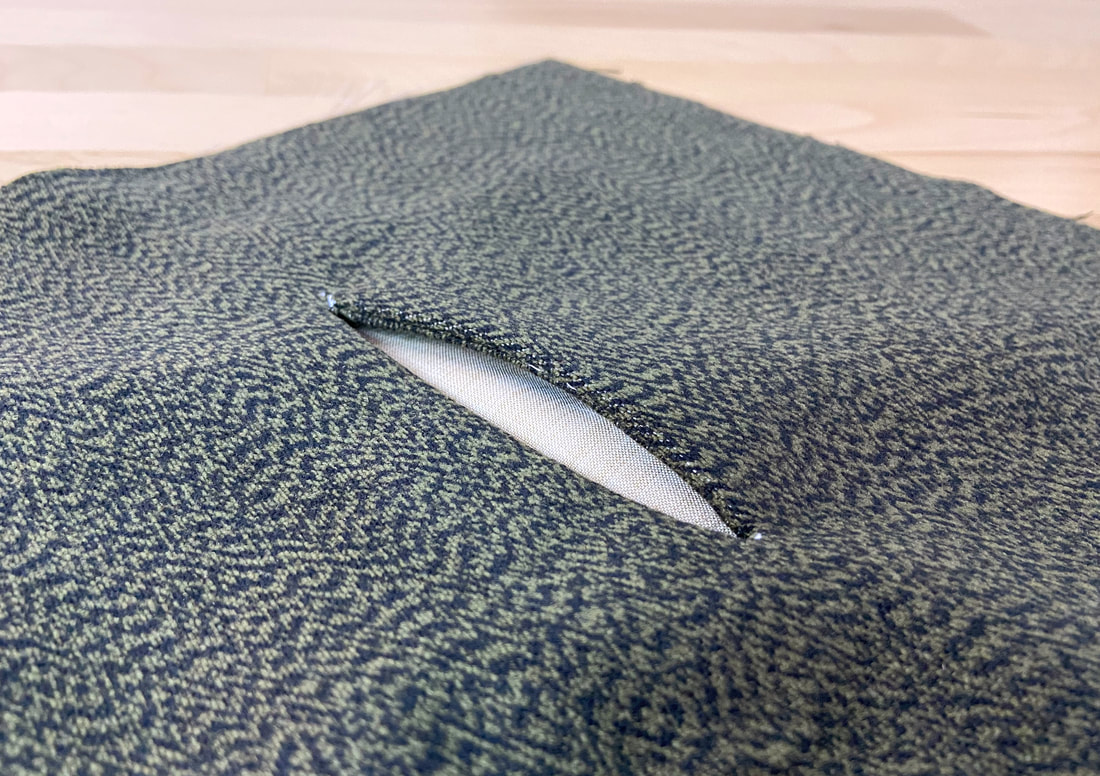Mini Tutorial: How To Sew A Slit Slash Pocket
1. Cut two identical pocket bag pieces such that they are at least 1" wider than the pocket opening. These pocket pieces can be as long as desired considering the final pocket depth plus an extra 1" to cover the pocket opening.
Fuse a piece of interfacing to the wrong side of the garment at the desired pocket opening. The interfacing will provide stability and strength in the finished slash pocket application.
The fabric choice for the pocket bag pieces is up to you as long as one of them is structured enough to clean- finish the pocket opening edges. This portion will serve as a facing. Conventionally, the facing is cut from the same fabric as the garment while the other pocket piece is constructed from a lighter weight fabric.
Fuse a piece of interfacing to the wrong side of the garment at the desired pocket opening. The interfacing will provide stability and strength in the finished slash pocket application.
The fabric choice for the pocket bag pieces is up to you as long as one of them is structured enough to clean- finish the pocket opening edges. This portion will serve as a facing. Conventionally, the facing is cut from the same fabric as the garment while the other pocket piece is constructed from a lighter weight fabric.
2. On the garment's face side, mark the slip pocket opening with a hand basting stitch.
Place the facing (or the more structured fabric pocket layer) on top of the marked pocket opening with fabric face sides touching. The pocket layer should be centered against the pocket sides, and its top edge should be about 1" away from the top pocket opening line.
Place the facing (or the more structured fabric pocket layer) on top of the marked pocket opening with fabric face sides touching. The pocket layer should be centered against the pocket sides, and its top edge should be about 1" away from the top pocket opening line.
3. Hand baste the pocket layer at the top and bottom to keep it secured during the machine stitching process to follow.
4. From the garment's wrong side, machine stitch the pocket opening following the marked hand basting as a guide.
5. Apply another layer of stitching at each pocket corner, placing it directly on the existing stitch at about 1" away from the corner on each side (as shown above).
6. Once complete, remove the hand basting applied in Step 3 above.
7. Cut lengthwise down the center of the pocket opening into each of the corners as shown. Cut as close as you can to the corner stitching but be careful not to accidentally clip through the stitch.
8. Turn the pocket layer to the garment's wrong side and iron the resulting clean-finished edges flat. There should be no tension at the slit pocket's corner. Too much tension means you did not cut close enough to each corner- flip the layers back on their wrong side and cut additionally into the corner, again, being careful not to accidentally cut the stitching.
9. Understitch the top and bottom pocket opening by stitching through the pocket layer and seam allowance layers underneath at about 1/8" from the seamlines (as shown above).
10. From the garment's wrong side, place the second pocket layer on top of the stitched facing such that all edges align. Insert pins perpendicularly to secure.
11. Machine stitch along all edges to complete the pocket bag.
Once complete, the contrast pocket layer will be visible on the garment's face side. For that reason, it's always good to chose a fabric that will work best with your garment's fabric and/or design. For a monochromatic look, you can use the same fabric as the garment to complete the entire pocket bag.

